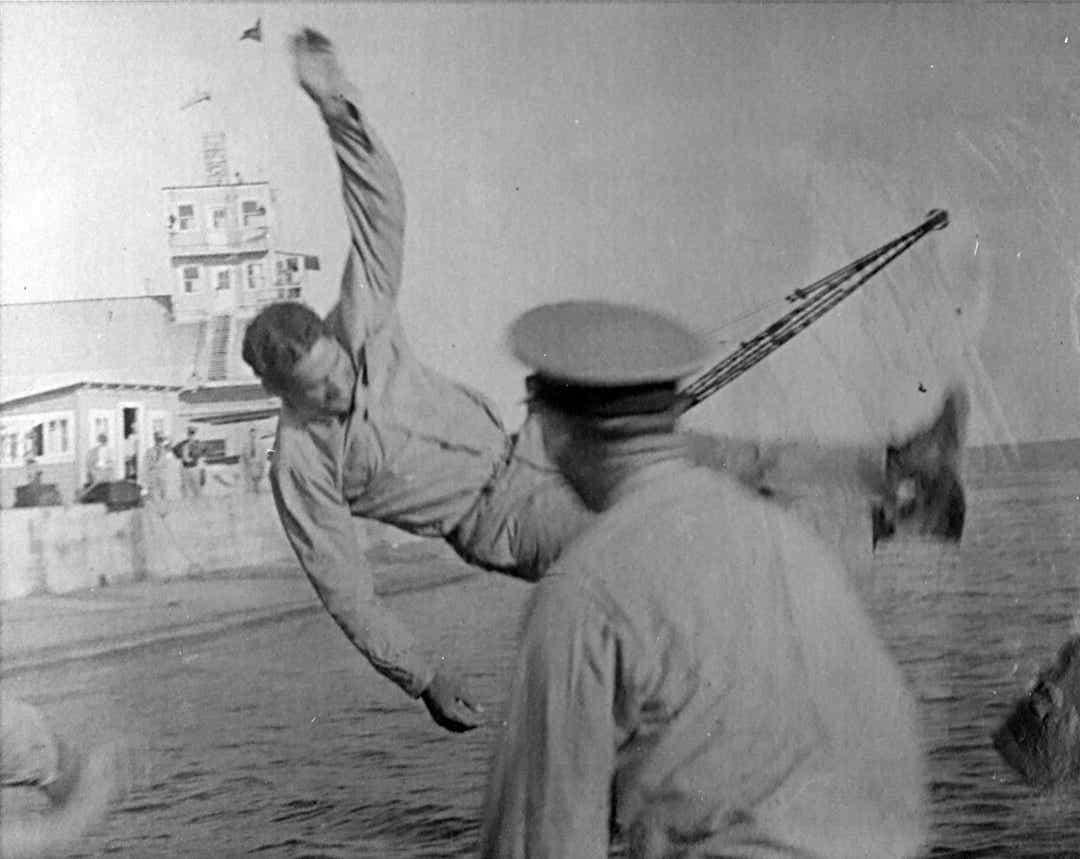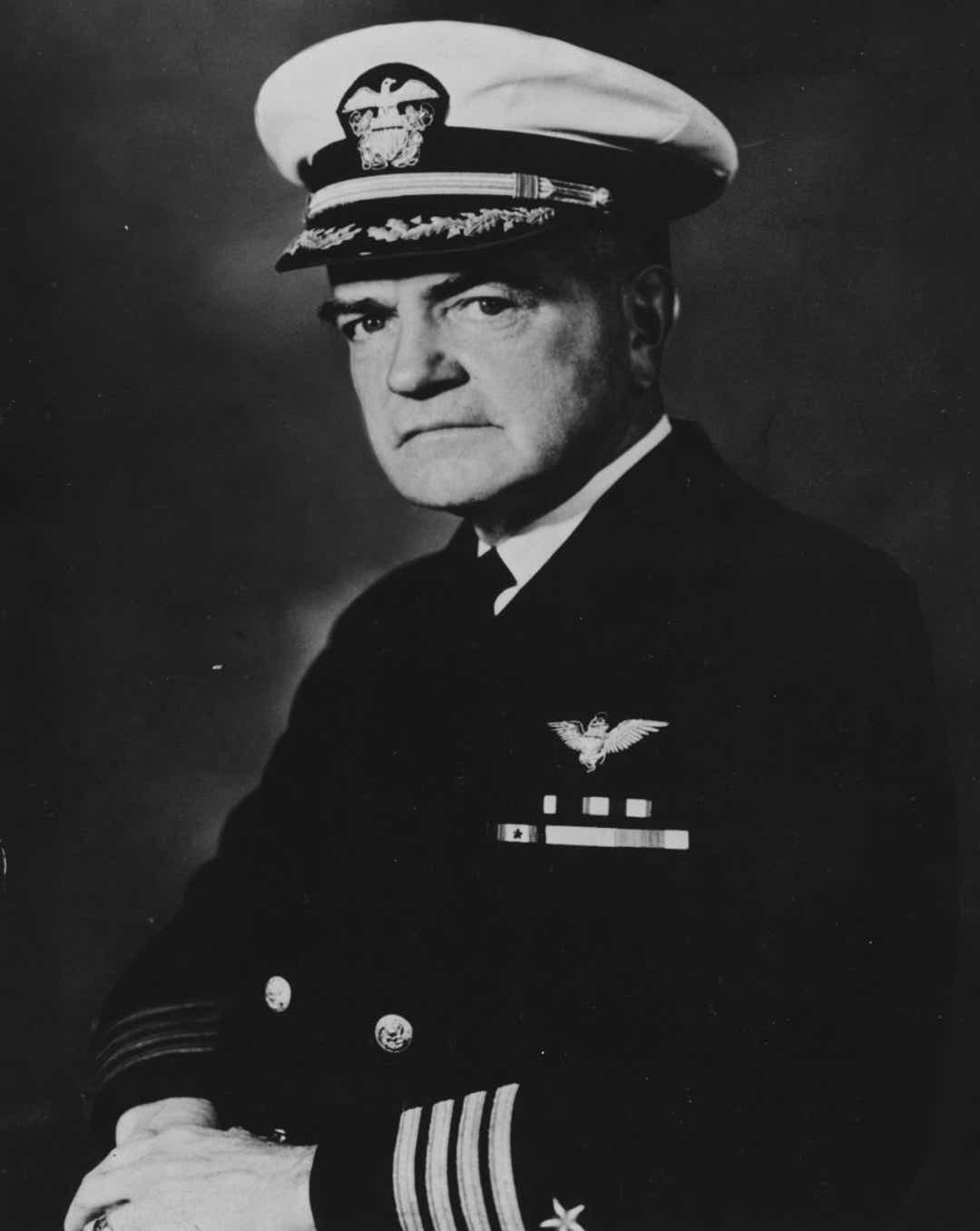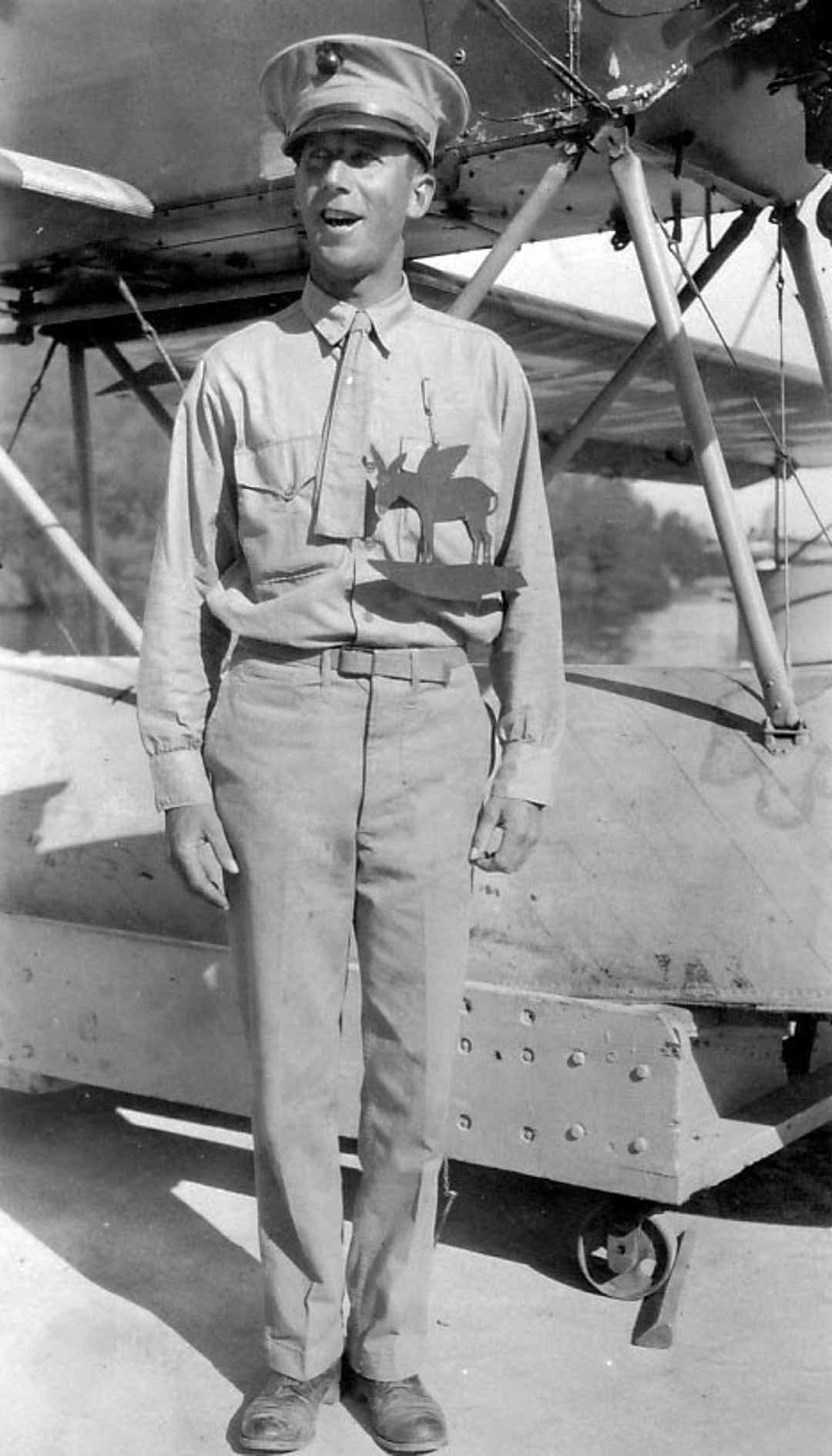
Look skyward around Pensacola today and you are sure to see "orange and whites," a nickname within naval aviation for training aircraft. Before that, they were yellow and when the first naval aviators arrived in 1914, Pensacola residents could observe wood and fabric flying machines buzzing through the skies overhead. Pensacola has certainly earned its moniker the "Cradle of Naval Aviation," and along the way, traditions have come and gone, while some endure to this day.
The current NAS Pensacola insignia features a gosling, a young goose, wearing helmet and goggles and paddling on the water about to take flight. It reflects the period when it was adopted during which naval aviators learned to fly in seaplanes, splashing through the waters of Pensacola Bay for takeoffs and landings.
This gave birth to a tradition in which the last person in a flight class to solo, after taxiing to the seawall and climbing out of the cockpit, took a ceremonial plunge into the bay at the hands of his classmates. No one escaped this ritual, regardless of rank, including the famed Capt. William F. Halsey Jr., who went through flight training in his early 50s and suffered this fate with assistance from officers who were far junior to him in rank and age.
► Naval aviator brothers fulfilled father's wish to serve their country
► How a future Blue Angel survived the Battle of Midway

Students in the years before World War II also routinely wore the uniform of the day when flying, which in Pensacola was generally khakis and a tie. It soon came to pass that when a student completed his first solo, untied from his instructor for the first time, he could cut his tie, which symbolized for all who saw him that he had successfully taken an airplane aloft by himself. Although flight suits are now the norm, these tie cuttings continue with ceremonies in primary flight training, the instructor sharing a story about the student and then taking a pair of scissors to a colorful tie chosen for the occasion.
Attitudes about safety were lax in the earliest days of training as naval aviators pushed the envelope. "Aviation is still the field where the daredevils foregather," a fight student wrote to his father in 1924. For a time, aviators routinely climbed out onto the wings of N-9 trainers during dual training flights, proving their bravery. Thankfully safety became paramount and the Navy sought unique ways to get the message across.

During World War II, artist Robert Osborn created a character named Dilbert, using this aviator who never did anything right in hundreds of illustrations to instruct students. Some squadrons created medals or special hats referencing Dilbert that were passed around to pilots when they did something "worthy" of the character.
Before Dilbert, some elements within the training command had a medal shaped like a donkey that recognized an action that in its stupidity exemplified the characteristics of a jackass. One of the most decorated officers in history, Halsey claimed the "Medal of the Benevolent Order of the Flying Jackass" while a flight student. An April 11, 1935, memo that accompanied its presentation cited him for taxiing over boundary lights at Corry Field, jokingly saying, "there will always be unsuspecting young pilots who will find the said boundary lights a hindrance rather than a kind to help their progress."
Halsey eventually relinquished the medal to another student, perhaps one who later served under his command in the great battles of World War II, their stories and so many others part of the fabric of naval aviation history in Pensacola.
Hill Goodspeed is the historian for the National Naval Aviation Museum and a columnist for the News Journal.
tinyurlis.gdu.nuclck.ruulvis.netshrtco.de
مقالات مشابه
- منطقه بندی تخته پاک راه را برای 96 شهر توسعه در جنگل خلیج آمریکا در خلیج فارس نسیم
- دانشکده سنا فرمان رای کمیته شروع به سقوط در سه ماهه 1 هفته قبل
- فلوریدا COVID-19 موارد ادامه 1,000-به علاوه روزانه صعود به عنوان تست بازگشایی گسترش
- اجی مجی بهترین راهکار آموزش دروس ابتدایی در دوران کرونا
- تعیین مرز با صفحه نمایش در زوم دانشگاه
- دوره پذیرش پزشکی کنکور ارشد
- ثبت شرکت مواد شیمیایی
- Photos: Hurricane Sally leaves parts of Maritime Park in shambles in downtown Pensacola
- Forest Creek residents whose homes flooded forced to move. Their landlord isn't helping.
- دکانتور شیشه ای چیست ؟